How To Clean Gas Stove Top; Say Goodbye To Grease
How To Clean Gas Stove Top; Say Goodbye To Grease
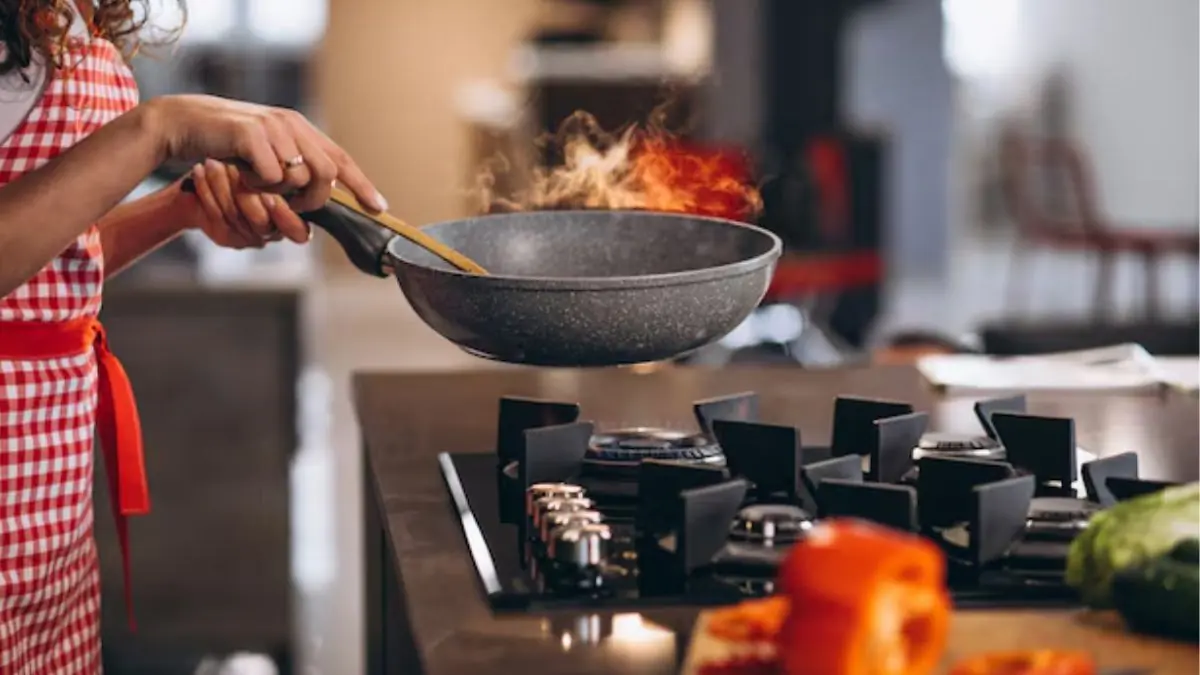
Is your gas stove a breeding ground for germs? Remove the knobs, look into the crevices, and don’t forget to clean the grates. Grease, dirt, and food build-up can make the stove unfit for cooking. Check out how to clean it without putting in too much effort.
A sparkling gas stove top isn’t just about the shine and spotless surface, it also ensures safer cooking and hygiene of the kitchen. It is, however, unfortunate that daily splatters of oil, sauce, and food bits instantly turn into stubborn, baked-on grease that’s no short of a nightmare to scrub off. The worst part is it attracts cockroaches, flies, and mosquitoes, making the kitchen a breeding ground and food unsafe for human consumption.
But don’t worry because there are a few tried and tested desi nuskhas and cleaning agents available in the market to help you tackle even the toughest stains without harsh chemicals damaging the surface.
Hot Soapy Water and a Scrub Sponge

Sometimes, the simplest solution works wonders, and there is no harm in testing it. Fill your sink or a bucket with hot water. Pour mild dish soap in it and lather it up. Remove the grates and burner caps, and soak them in the solution for 20–30 minutes. Meanwhile, dip a scrub sponge in the soapy water and scrub the surface and edges of the stovetop. The hot water will loosen greasy residues, making it easy to clean them without all the upper arm muscle work. Rinse everything well and dry with a clean cloth piece to prevent water spots.
Vinegar Spray for Daily Degreasing
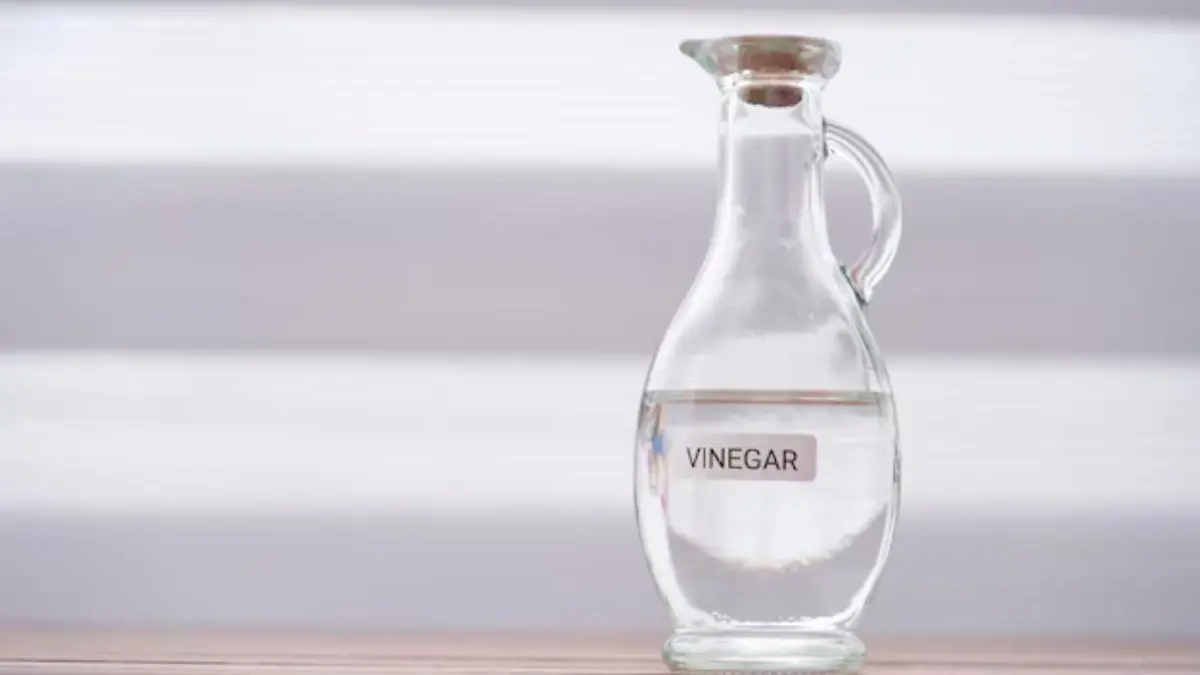
White vinegar has acidic properties, allowing it to cut through fresh grease in an instant. Mix equal parts white vinegar and water in a spray bottle or a mug. Lightly spray your stove top after cooking, and wipe off the surface with a microfiber cloth. You can also dip the same cloth in the solution and clean the gas stove. It will prevent grease from hardening, and for tougher spots, let the solution sit over there for a few minutes before you clean it. Vinegar will also leave the stove with a streak-free shine and neutralise the odour.
Commercial Degreaser Spray
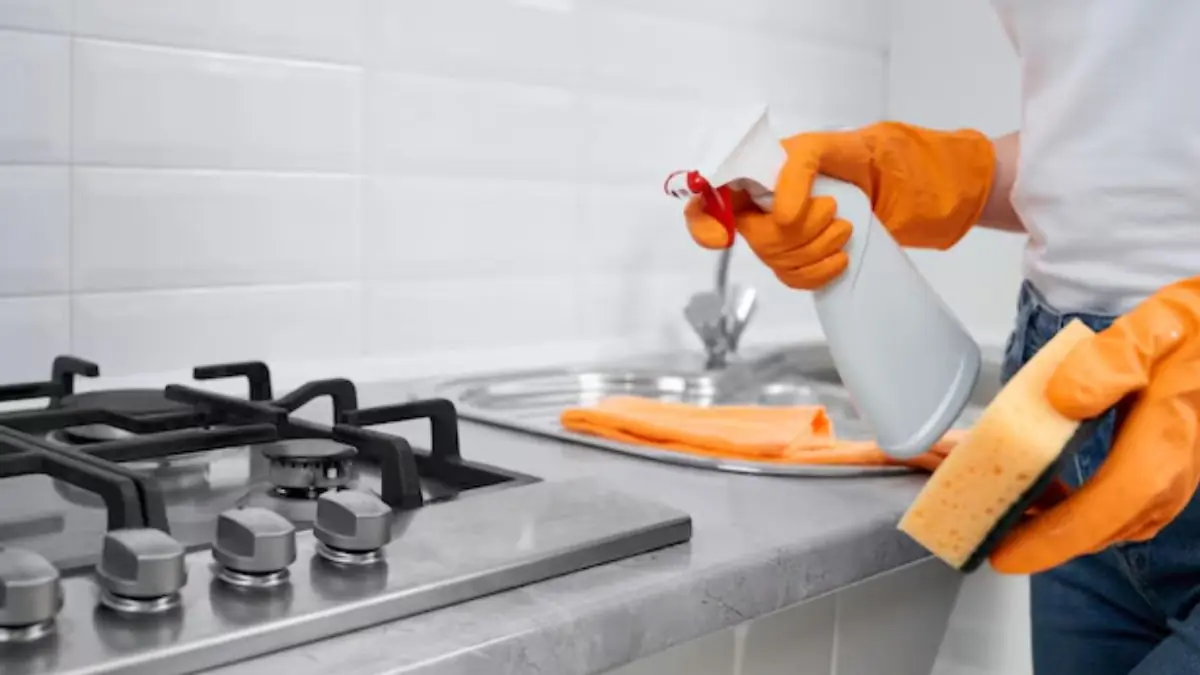
When home remedies aren’t working out the way you expected, it is time to reach out to an expert – a store-bought degreaser that can tackle heavy build-up. Choose a non-toxic degreaser that does not cause any further damage to the stove. Spray it over the stove top, grates, and burner caps. Leave it for 5 minutes before scrubbing with a brush or sponge. Rinse it later and wipe it dry with a paper towel. Make sure to check the product label to ensure it’s safe for the stove.
Baking Soda Paste for Stubborn Spots
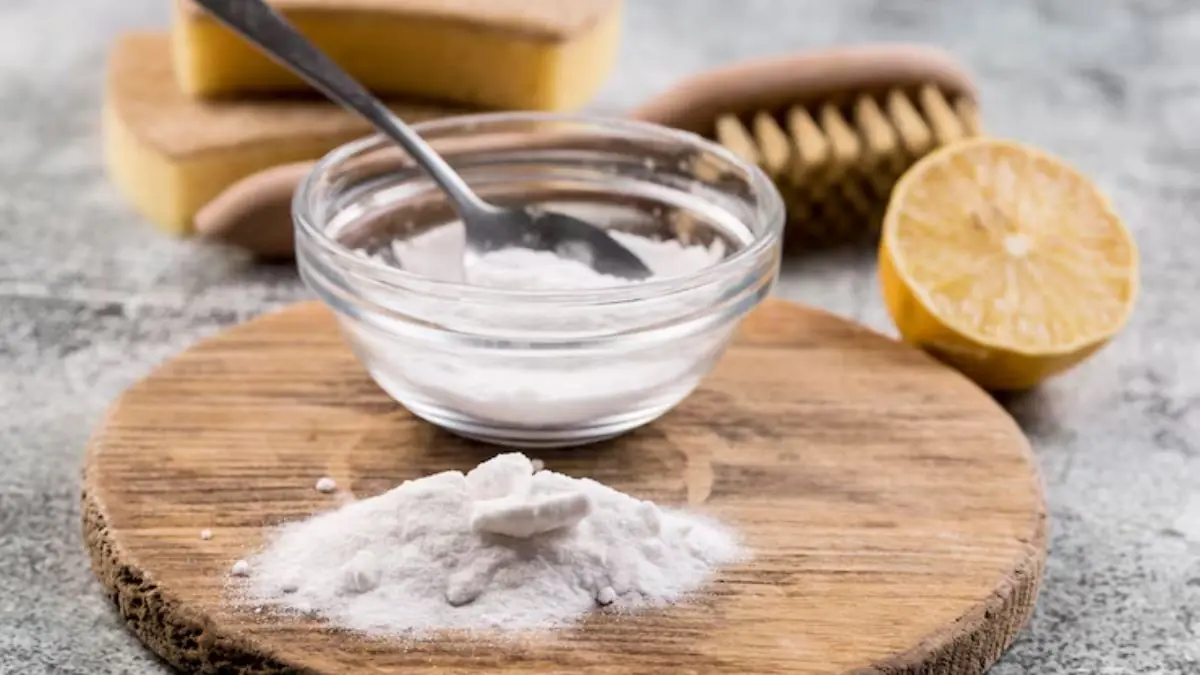
Baking soda is every kitchen’s superhero as it swoops in to fight the mighty stubborn stains and food build-up. Mix three tablespoons of the powder with enough water to make a spreadable paste with a thick consistency. Apply it generously over the stains and grimy spots on the stove. After 15–20 minutes, scrub the surface gently with a sponge, then wipe clean with a damp cloth. This method is gentle on the surface yet powerful on the grease and residue.
Toothbrush and Soapy Water for Crevices
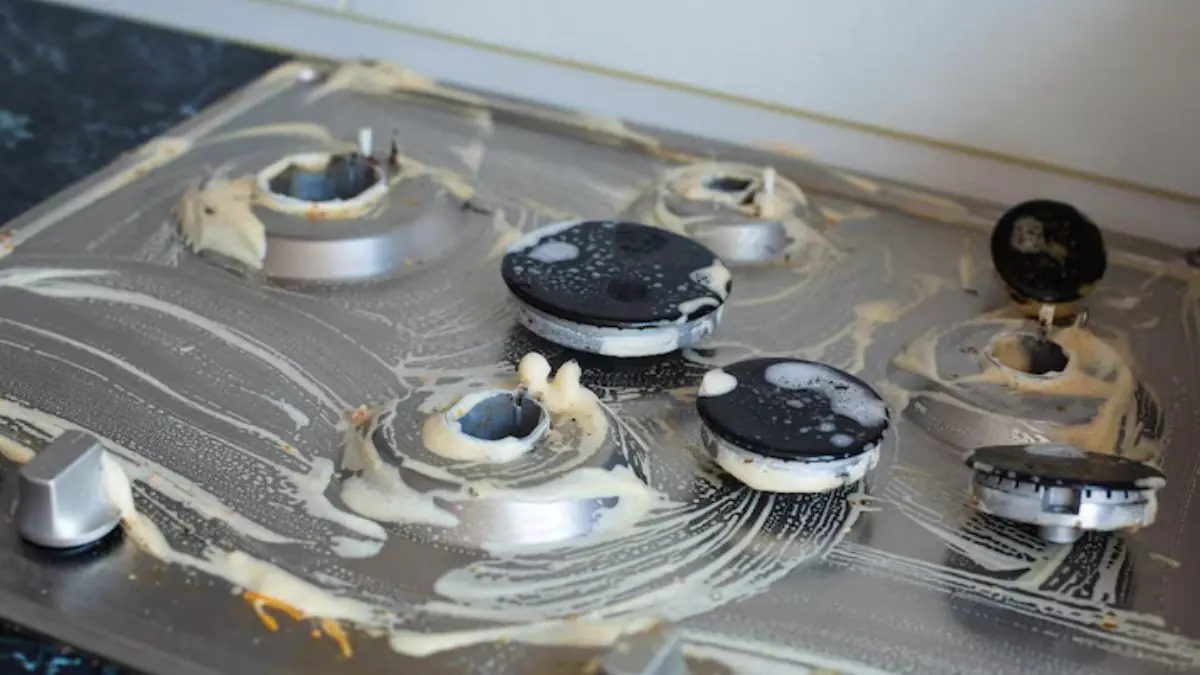
Small crevices and the portion behind the knobs often hide stubborn dirt and food build-up which is where you will witness insects rushing to. A simple trick is to dip an old toothbrush in warm, soapy water and scrub around the burner bases, behind the knobs, and any corner or space where grime collects. The bristles will reach crannies where sponges cannot. After scrubbing, use a microfibre cloth to remove the dirt. You can also remove the knobs and clean the area without hassle.
Lemon and Baking Soda Combo
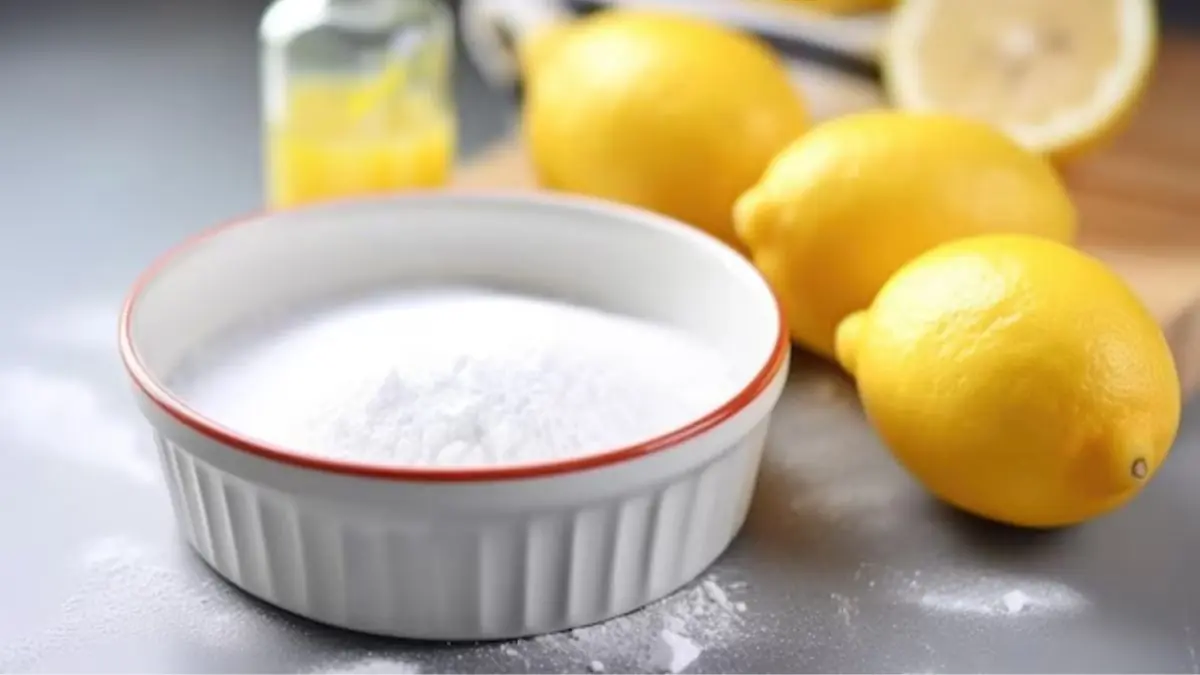
Lemon and baking soda are natural degreasers that also leave a fresh scent behind. Cut a lemon in half and dip the surface into baking soda. Use the half-cut fruit like a scrubber, rubbing it directly on greasy spots and stubborn stains. The citric acid in lemon works with the abrasiveness of baking soda to dissolve oil, dirt, food build-up, and grime. Wipe down the stove top with a damp cloth to get rid of the residue. This method will also deodourise the surface and leave the space with a citrusy scent.
Salt and Hot Water Scrub
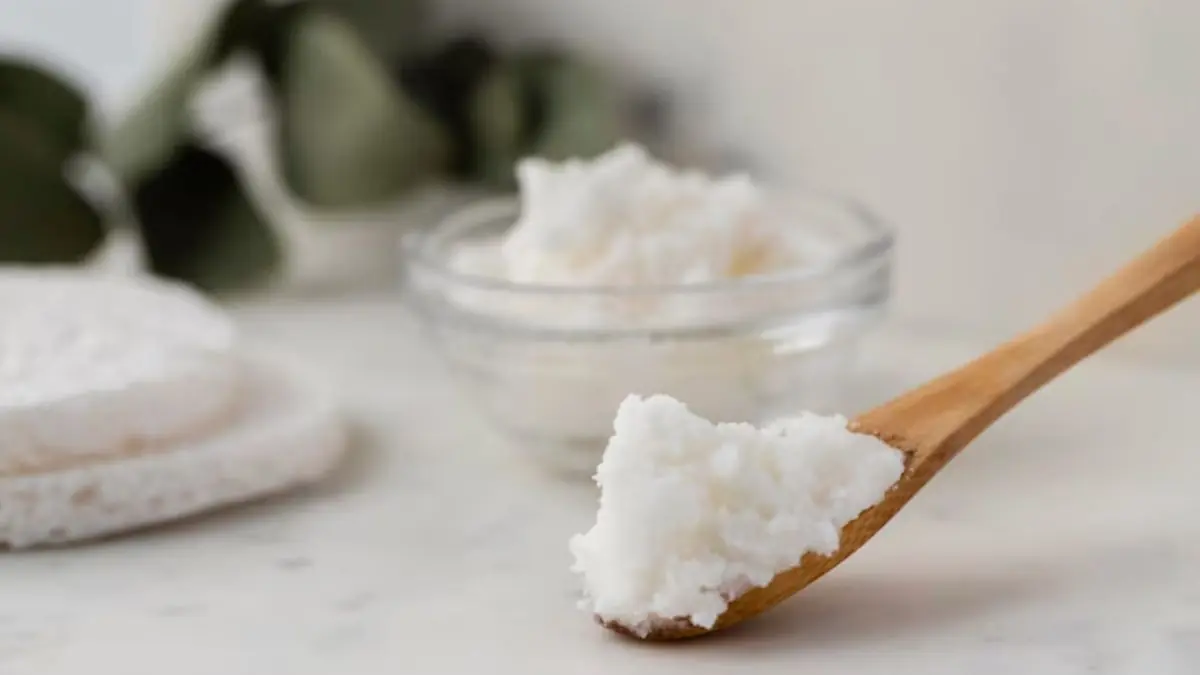
If you’ve spilled sauce or oil has dried up, salt can be a helpful ingredient in the kitchen to get rid of stains. Sprinkle coarse salt all over greasy areas on the stove. Then pour a little hot water over it to form a gritty scrub. Take a sponge or cloth to rub the mixture in circular motions. The salt acts as a mild abrasive that removes residues without damaging the stove’s surface. Wipe away the grime and rinse with clean water. Your gas stove will shine as if it is new.
Steam Cleaning for Deep Cleans
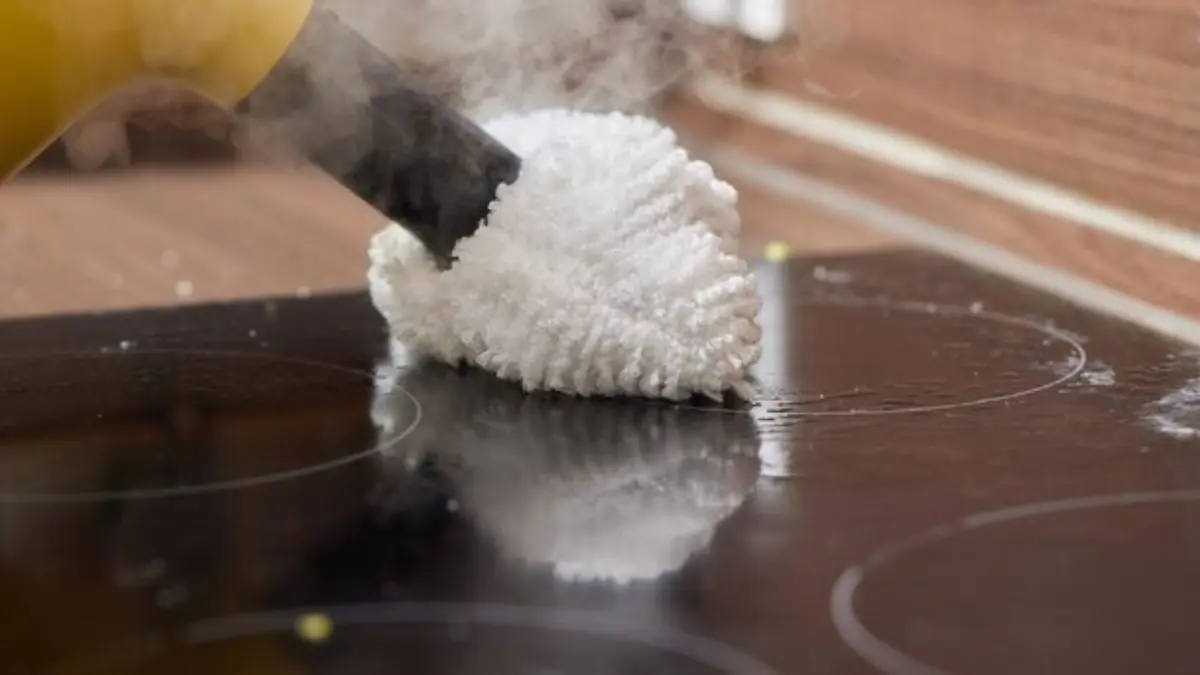
A handheld steam cleaner is a worthwhile investment for deep cleaning not just the gas stove but also crevices in the tiles and storage units in the kitchen. Fill it with water, turn it on, and direct the steam jet over the greasy surface, crevices, and area behind the knob. The high heat will soften the hard grease, making it easy to wipe it away with a clean cloth piece. Steam cleaning is also chemical-free and sanitises the surface, allowing you to kill three birds with one arrow.
Razor Blade Scraper for Burnt Residue
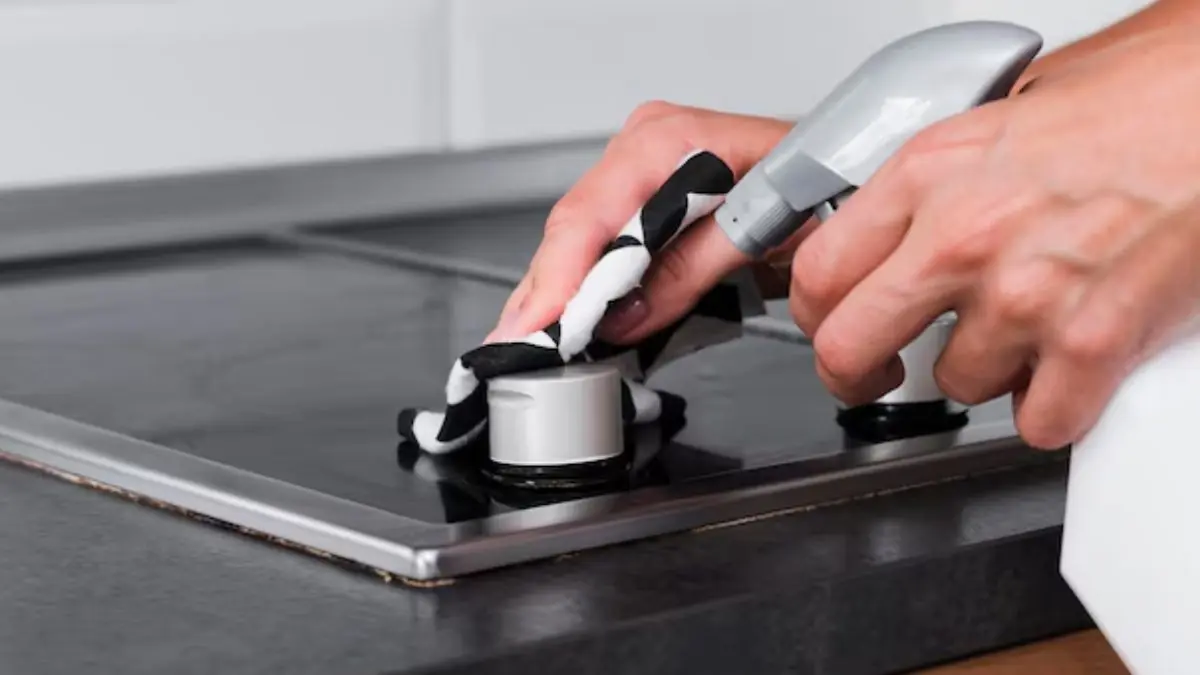
For tough, burnt-on food splatters that you cannot get rid of using all kinds of agents and home remedies, it is time to use a sharp gun – a razor blade scraper. Hold the blade at a low angle and gently scrape off the residue without gouging the surface. This works best on glass or metal stove tops. Wipe away loosened bits with a damp cloth. Always be cautious and use light pressure to avoid scratches.
Dish Soap and Baking Soda Duo
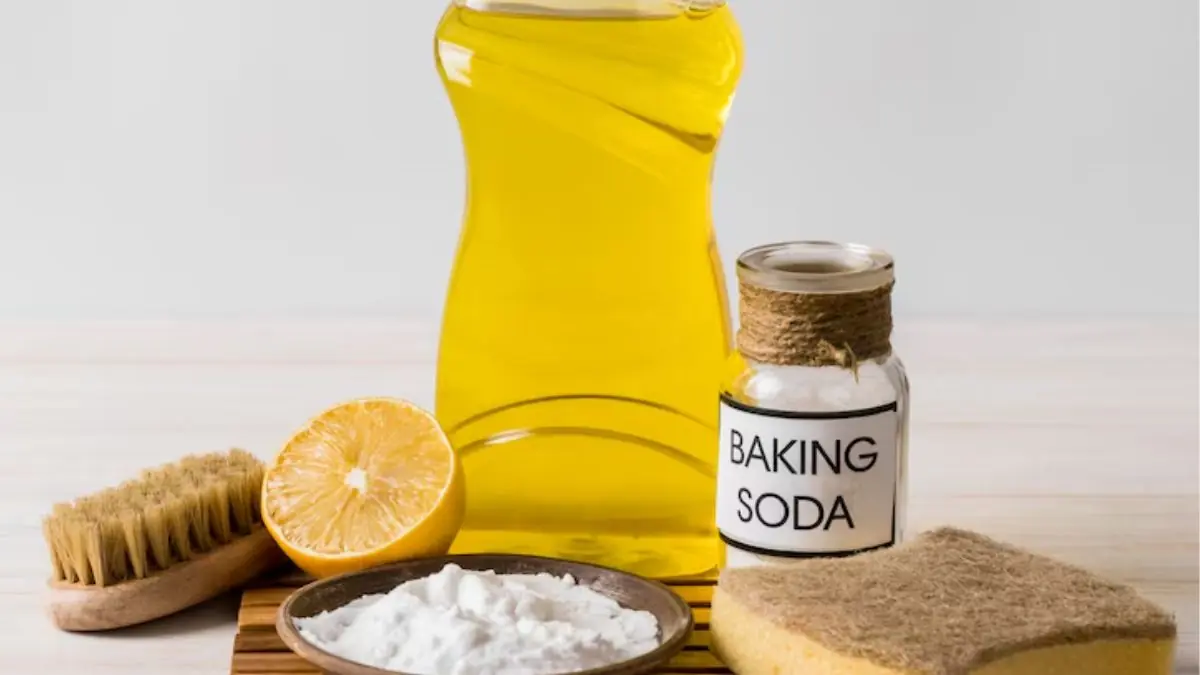
Combine the degreasing power of dish soap with the mild abrasiveness of baking soda to quickly clean the gas stove. Sprinkle baking soda directly on greasy spots, then squirt a few drops of dish soap over it. Using a damp sponge, scrub in gentle circles. The soap cuts through oils while the baking soda lifts stuck-on residue. Wipe with a clean, wet cloth to remove any soapy film. This combo works well for moderate build-up and is safe for most stove surfaces.



